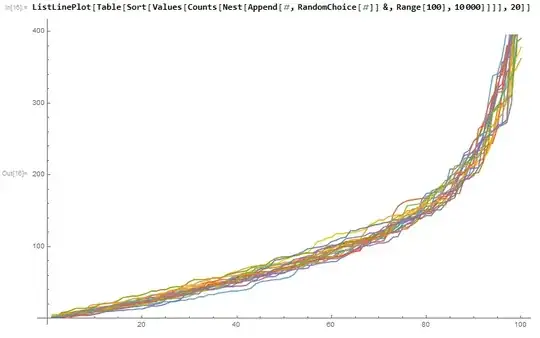I have a bag with one black marble and one white marble. Whatever color I draw from the bag, I put it back with another marble of the same color. I'm curious about the composition of the bag as I continue playing this game forever. Will it approach a certain ratio asymptotically? If it does, is that ratio highly dependent on the first several draws, or will it always approach the same ratio?
I'm also interested in playing this game with a larger amount of distinct colors to start with. I tried doing just that in Mathematica with a bag starting with 100 colors and applying the procedure 10,000 times. I'd then take the counts of each color, sort them, and plot a graph of the counts from least abundant color to most abundant color. I did it with this line of code:
ListLinePlot[
Table[Sort[
Values[Counts[
Nest[Append[#, RandomChoice[#]] &, Range[100], 10000]]]], 50],
PlotRange -> All]
I'd like to learn more about this problem, but I don't have enough experience outside of Calculus to know where to really begin.
